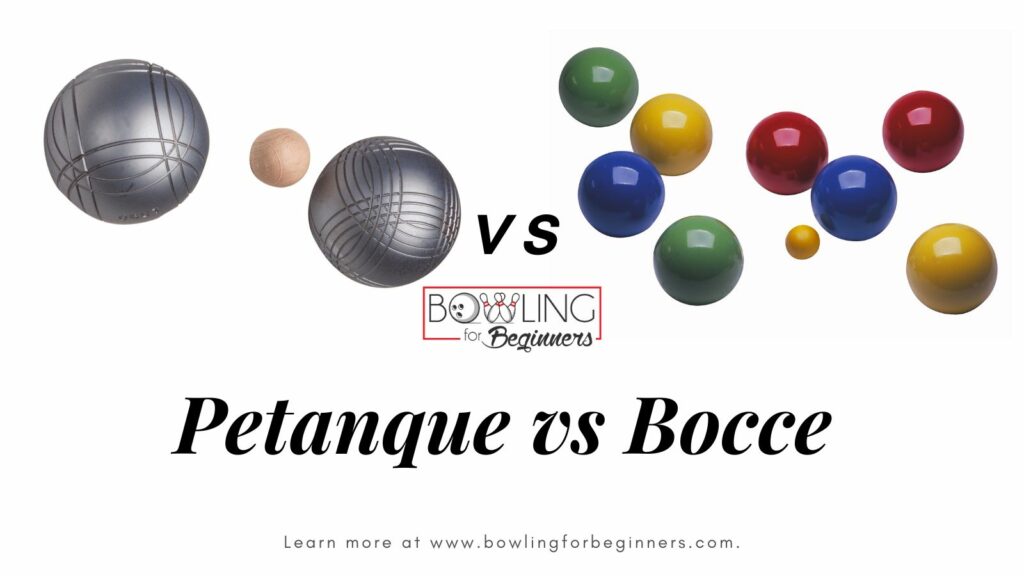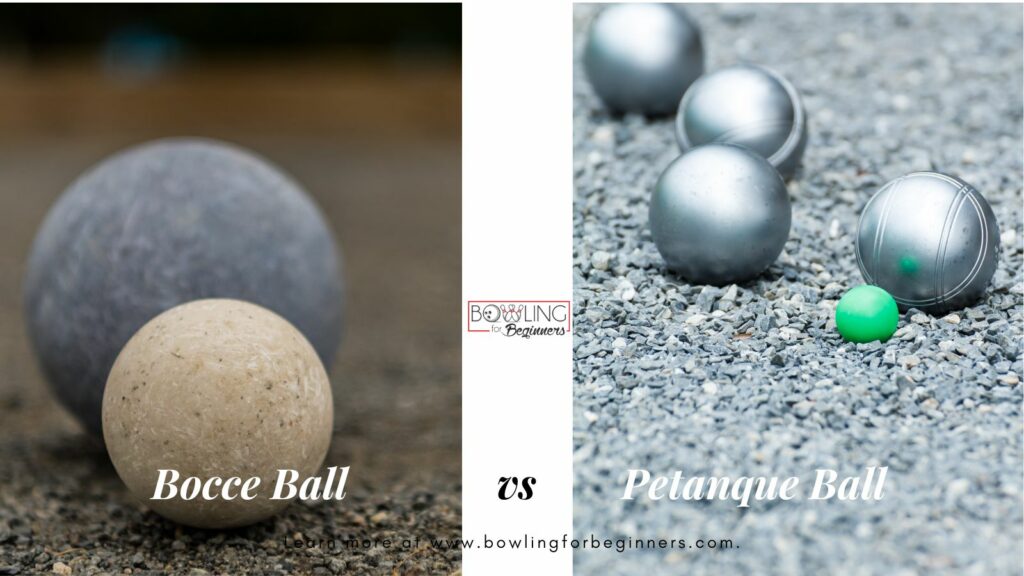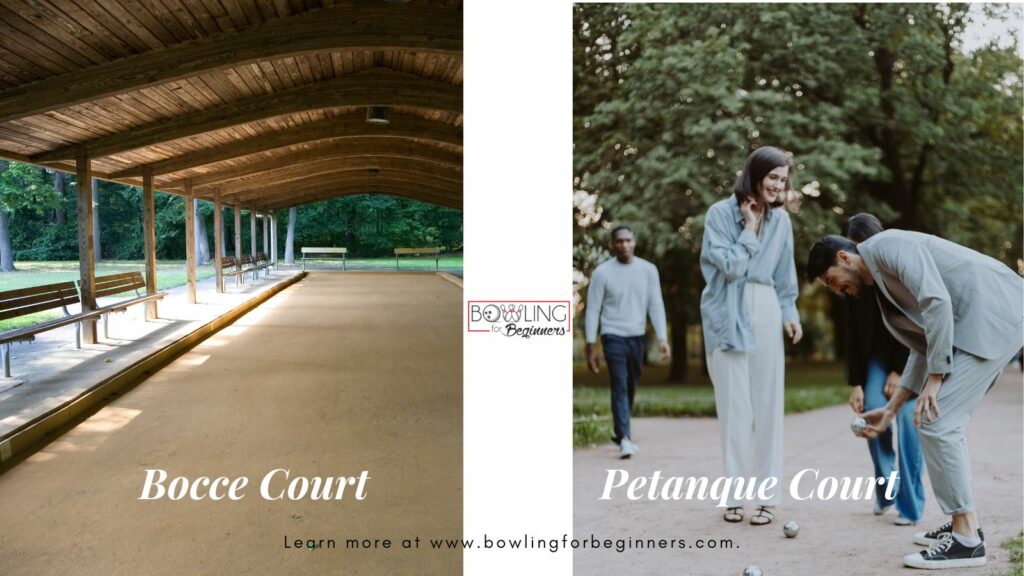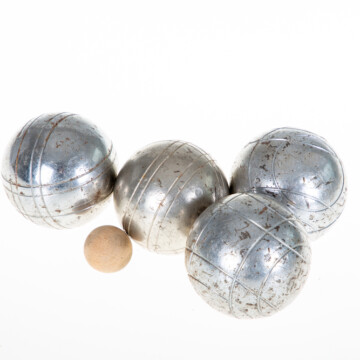
Thinking about getting into a new outdoor bowling game? You're on the right track if you're considering petanque or bocce. Both ball games offer a great mix of strategy, skill, and social interaction.
Originating in different countries, these two games have made their way into parks, backyards, and even professional leagues globally. Want to know which one is going to be the best fit for you and your friends or family?
This article will be a big help - in it, we’ll compare petanque vs bocce and point out all of the differences you should know about to make the right decision.
Contents
Petanque vs Bocce: Which Is Right for You?
Choosing between petanque and bocce boils down to what you like. How will you know whether you like to step up and roll the ball vs. toss it from a stationary position? Moreover, there's no way to know whether you prefer the feel and reaction of bocce balls or petanque balls unless you play with them.
So, we urge you, after you read this article, to get out there and try both games to determine which one is right for you. In the meantime, let us share their differences and similarities.
What Is Bocce?
Bocce is an Italian game that has been around for centuries, finding its modern form mainly in Italy but spreading to various parts of the world, particularly where Italian communities have settled. It's a simple yet engaging game that people of all ages can enjoy, making it a popular choice for family gatherings, casual hangouts, and even more competitive settings.
The Basics of Bocce
The sport is relatively simple. Here are a few basic things everyone should know about the sport before getting started:
- Objective: The main goal is for bocce players to toss their bocce balls (typically four per team, made of resin or similar material) as close as possible to a smaller target ball called the "pallino."
- Playing Surface: Bocce courts are created on various terrains, but official games usually take place in a specialized court made of crushed stone or a similar material.
- Players: The game can be played one-on-one or in teams of two, three, or four.
How to Play Bocce
Now, let’s get into gameplay. Here’s how a game of bocce goes in a nutshell:
- One team tosses the pallino to a distance agreed upon or designated by the court.
- The same team throws one bocce ball aiming to get as close to the pallino as possible.
- Teams alternate tossing their bocce balls, aiming to either get closer to the pallino or knock the opponent's balls away from the pallino.
- Only the team with the closest ball to the Pallino scores. They get points equivalent to the number of balls closer to the pallino than the nearest opponent's ball.
Bocce Equipment
You’ll need a few basic things to bring a bocce ball game to fruition, and they include:
- Bocce Balls: Eight in total, four of one color for each team.
- Pallino: One smaller target ball, usually white.
- Measuring Device: Sometimes needed to determine which ball is closest to the pallino.
What Is Petanque?
Petanque is a lawn game that originated in the Provence region of France in the early 20th century, specifically in the small town of La Ciotat near Marseille. While similar ball-tossing games had existed in ancient civilizations and throughout European history, Petanque, as we know it today, was formalized in this particular context.
The Meaning of Petanque
The word "petanque" comes from the Provençal dialect term "pé tancat," which translates to "feet anchored," highlighting one of the game's distinct features: players must throw the ball with both feet planted firmly within a starting circle.

The Basics
The basics of petanque are similar to that of bocce. Check them out:
- Objective: Players aim to throw or roll their hollow metal balls as close as possible to a small wooden ball, known as the "cochonnet" or "jack."
- Surface: The game can be played on a variety of terrains—gravel, dirt, or sand—making it highly accessible and adaptable to different locations.
- Players: In a typical game of petanque, you have two teams, which can be composed of one, two, or three players.
How to Play Petanque
Here's how to play petanque in a nutshell:
- A coin toss determines which team goes first.
- The starting team throws the cochonnet to establish it as the target.
- Players take turns tossing their steel balls toward the cochonnet, trying to get as close as possible. They may also make the strategic decision to knock opponents' balls away.
- Points are scored by the team that has a ball closest to the cochonnet after all balls are thrown.
Equipment Needed for Pentanque
The key equipment for petanque includes the following:
- A set of steel boules: Pétanque balls (ie. petanque boules) are usually about 70.5 cm - 80cm in diameter and weigh around 650-800 grams, according to USApetanque.org.
- A cochonnet: The cochonnet is considerably smaller, typically wooden, and serves as the target.

What Is the Difference Between Bocce and Petanque?
The differences between bocce and petanque may be obvious to you at this point. But to be illustrative, we’ll point them out one at a time:
Origin and Cultural Context
Petanque hails from France, while Bocce has its roots in Italy. Each game is deeply embedded in its respective culture, impacting everything from the way the games are played to the social customs surrounding them.
Playing Surface
Bocce courts are flat and made of asphalt, crushed stone, or a similar material. Petanque, on the other hand, is more forgiving when it comes to playing terrain. You can play it on gravel, sandy surfaces, and even uneven surfaces.
In addition, the surface size requirements are different. A standardized bocce court measures about 90 by 13 feet. A competition petanque court is usually 50 by 13 feet. Though, you can build your own bocce or petanque court according to your preferences.

Boules/Balls Used
Bocce balls are usually made of a hard resin composite, and competition boules for petanque balls are made of metal, according to the FIPJP. The bocce ball is generally larger and somewhat heavier compared to a petanque boule.
Throwing Technique
In petanque, players usually toss the metal balls underhand and must keep both feet inside a small circle while throwing. The stationary stance in petanque (remember, "feet anchored") adds a layer of restraint that doesn't exist in bocce.
In bocce, you can either toss the ball underhand or roll it to reach the target ball, known as the "pallino."
What Is the French Version of Bocce Called?
The French version of bocce is usually referred to as "boules" or "jeu de boules," although it's worth noting that "boules" is a term that can refer to several ball-throwing games, including petanque. One particular variant that is similar to bocce is called "jeu provençal," also known as "boule lyonnaise."
In jeu provençal, the playing area is larger, and players are allowed to take a few steps before throwing their ball, unlike in petanque, where players are required to keep their feet anchored within a circle.
So, while petanque is the most internationally recognized French ball-tossing game, jeu provençal would be the variant that is most similar to Italian bocce, both in terms of rules and gameplay.
Is There a Difference Between Boules and Petanque?
Yes, there is a difference between boules and petanque, although the terms are sometimes used interchangeably. "Boules" is a broad and generic term used to describe any game where the primary activity involves throwing or rolling balls toward a target.
This category includes a variety of games, such as petanque and boule lyonnaise, among others. Each of these games has its own specific rules, techniques, and playing conditions.
Petanque, on the other hand, is a specific type of boules game with its own distinct set of rules.
Related Articles
So, there you have it - everything you need to know about the differences between petanque and bocce. We hope you found all the information you were looking for, and we wish you the best as you dive deeper into the sport.
And if you're looking for something different, don't underestimate the appeal of lawn bowling or bowling games at your local alley.
Kira Byrd, a Certified Fraud Examiner, holds a B.S. in Accounting from the University of Alabama at Birmingham. With a passion for bowling from her childhood, Kira has poured her expertise and personal experiences into creating and nurturing Bowling For Beginners. Kira's mission is to meet new bowlers where they are and guide them toward consistently achieving higher scores. With a focus on skill development and strategic techniques, she empowers readers to take control of their game and unlock their true potential.
Bowling For Beginners embodies strict editorial integrity, ensuring reliable and unbiased information. Kira's commitment to delivering valuable insights and practical strategies is reflected in every article. Here's an explanation of our editorial policy and how we get money.




